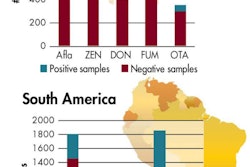Activists pushing for mandated labeling of genetically modified (GM) foods are really pushing a disingenuous political agenda that will be both confusing and costly for consumers.
For years, these activists have tried to insinuate there might be something risky about GM foods. However, the scientific consensus — built around countless studies and 7 trillion meals consumed — has remained solid that GM foods are as safe as any other foods.
With the science settled, those pushing for mandatory GM labeling now say they just want consumers to have access to information. In a recent Roll Call op-ed, Scott Faber of the Environmental Working Group said the issue of GM labeling “is about more than the right to know what we’re buying and eating. It’s also about consumer confusion.”
That’s a distortion of the issue. This is not about the right to know. The fact is that Faber and the other anti-GM activists support measures that would exempt approximately two thirds of food products on the market from being labeled. How will this provide the consumer with any useful information?
GM critics ignore the fact that existing food labeling policies already provide information about which foods have genetically modified ingredients and which do not. Food labeled USDA Certified Organic does not contain genetically modified ingredients. For consumers who choose to avoid GM food, this label provides them a reliable alternative.
Instead of educating consumers about the simple option that already exists, GM labeling proponents have been pushing states to pass initiatives requiring that food with GM ingredients also be specially labeled. Not only would this be duplicative, these initiatives routinely contain multiple exemptions and loopholes that would muddle — not clarify — consumer choices.
Under a GM labeling law passed in Vermont, vegetable soup would be labeled “genetically modified” while vegetable beef soup would not because meat is exempt under the law. Vermont also exempted dietary supplements despite the fact that many herbal supplements contain GM ingredients.
Activists in California pushed an initiative that would have required GM labels on a packaged pizza purchased in a supermarket, but not on a pizza purchased from a restaurant. Fruit juice would have required a label, but alcohol containing the same GM ingredients would have been exempt.
In Oregon, activists pushed a GM labeling initiative that would have exempted two-thirds of the food and beverages purchased by consumers. This included meat and dairy products that come from animals raised on genetically engineered food, which conflicts with existing labeling standards for “organic” products.
If activists really cared about a consumer’s “right to know,” they would not be drafting, endorsing and advertising in favor of a patchwork of state regulations that would leave consumers in the dark about what they are buying. Studies have also shown these state labeling measures would raise the average consumer’s grocery bill $400 to $500 a year.
Consumers will not be served by individual states taking different approaches to food labeling. The best way to protect the consumer’s right to know is by reaffirming the FDA’s role as our national authority on food safety and labeling.
This is the approach taken by the Safe and Accurate Food Labeling Act, bipartisan legislation introduced in the last Congress by Representatives Mike Pompeo, R-Kansas, and G.K. Butterfield, D-N.C., which is expected to be reintroduced in the coming session.
The right to know is about ensuring consumers have access to clear and consistent information, not creating a confusing maze of different state-based standards.















